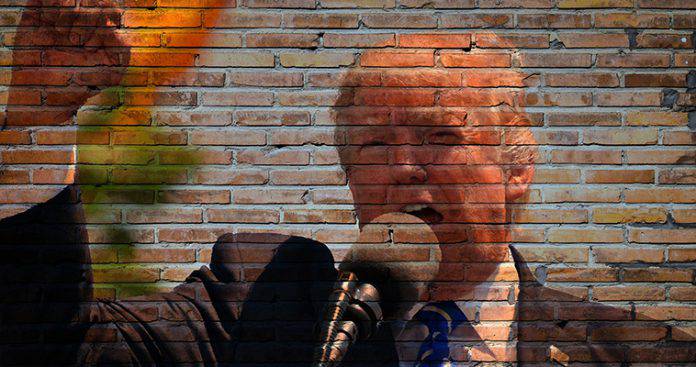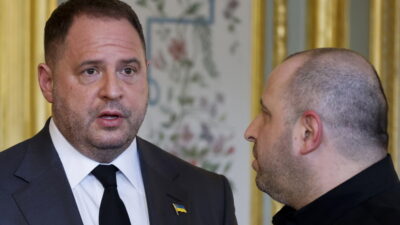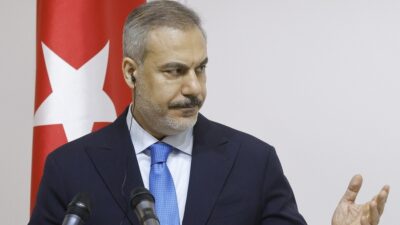Stavros Lygeros: From the “anti-systemic” Trump of 2016 to the toxic Trump of 2020
04/11/2020
The failure of opinion polls to predict Trump’s election in 2016 has now made pollsters more cautious. Their failure was deeply political and we had seen it before in both the Greek referendum of 2015 and the British referendum on Brexit. This is because the “anti-systemic” vote usually follows underground paths.
Especially when it comes from small and medium-sized homeowners with conservative ideology who were not used to making political noise. Twenty years ago, it would have been unthinkable for a man like Trump to become the Republican presidential candidate and even more so to be elected president, as happened in 2016. Lower and medium-income groups in both the US and Europe – in different countries – are turning their backs on traditionally dominant political factions.
The main reason is that the constants of their lives are being overturned throughout the Western World. The changes on the political map are a product of the tectonic changes that the economic crisis continues to cause, an authentic product of the greed of the moneyed oligarchy. The unequal distribution of wealth has reached alarming proportions in the United States as well. According to the New York Times, in the 1990s 1% of Americans accounted for 45% of GDP growth. In the eight years of Bush (2000-08) 45% became 65% and in the eight years of Obama, it jumped to 93%!
A large part of the American population is struggling to survive with dignity. It is not just about minorities and those traditionally marginalized. Globalization is throwing small and medium-sized white households off the train, especially the traditional white working class that has been hit hard by deindustrialization.
The “train” of globalization
Trump’s election was a product of this very situation. The 2016 election map shows that Hillary Clinton was typically voted for by the upper class and middle classes integrated into globalization. Also by the minorities (blacks, Hispanics, Muslims, etc.) who feared Trump’s anti-immigrant and conservative rhetoric. Both of these categories live more on the east and west coasts, which in 2016 were painted blue (Democrats). Instead, the intermediate states were painted red (Republicans).
When Trump wondered why the iPhone was made in China and not in the United States, he touched the sensitive strings of tens of millions of Americans who have been directly or indirectly affected by deindustrialization. His promise to impose tariffs on imports to force the repatriation of American companies that have relocated their factories to countries with low labor costs and non-existent labor rights was a pre-election “nuclear” weapon.
His rhetoric for taking drastic measures against the migratory flows worked in the same direction. The mass influx of immigrants fuels the instinct for self-preservation of societies that feel threatened by impoverishment. For these sections of the population, competition from cheap migrant labor is experienced as an additional threat. That’s why there is a feeling of nostalgia for the “good old days” in the USA.
Trump with a New Right ideology,
Trump’s promises move within the ideological context of the so-called New Right, variations of which have also appeared in Europe. The New Right is against globalization. It is no coincidence that almost the entire internationalized big capital, the established media, and all branches of the American and international establishment had passionately supported Hillary Clinton, even though Trump was generous with the rich.
We should note that in 2016 they had tried in every way to ridicule him and to deconstruct him morally, and not always without foundation. It is also no coincidence that even the then-Republican Party leadership not only tried to sabotage him in the race for the nomination but when he was nominated, several of its members sided with Clinton!
In the run-up to the 2016 election, Trump had in his own particular way politically expressed the despair and anger of small and medium-sized white households. It is one of the ironies of history that a billionaire has been elected President of the United States, denouncing globalization, which neoliberal Orthodoxy considers a natural evolution!
Conservative white “deep America”
As long as the globalized ruling elites realize that they are losing political control over large sections of society, they are serving a new kind of “aristocratic” view, in order to challenge the people’s ability to decide on critical issues. We saw it in Brexit, we saw it again in the Trump election in 2016. In fact, they question the core of bourgeois democracy, which, in the context of globalization, tends to turn it into an empty shell.
Anything that challenges the dominant views is characterized as populism, devalued, and eradicated. Such is the contempt they show towards the “hoi polloi” and there has been such abuse in brainwashing, which has had the opposite effect. When the established media passionately supports something, a large part of society reflexively takes the opposite position. We see it even in the case of a pandemic.
Trump has played the role of anti-globalization and halting illegal immigration, linking both to the pervasive economic and social insecurity of “deep America.” In fact, as a candidate, but later as president, he had crossed the traditional Democrat-Republican line. It had highlighted another separation that emerges from the bowels of American society and refers to a new socio-class reality.
Tough bellicosity and toxic behavior
He had won the election in terms of the New Right (mutation of the traditional popular Right) in the conservative white “deep America”, to the Americans that globalization is kicking off the “train”. Those whom Clinton had then blatantly called the “basket of deplorables.” To those whom the Democrats offered no prospects because they were treated as the inevitable victims of “progress.”
As president, Trump again mainly addressed them. It is true that he faced a fierce multiple front wars waged by his political enemies. Equally true, however, is that his behavior is extremely toxic and accompanied by political inadequacy. In fact, he invested politically-electorally in the division, as did his opponents, who did not cease to consider him an “invader” and a “maverick” of power.
In 2016 he was elected because he had ridden the right political horse. As president, however, he proved incapable of managing power constructively, although after his election a section of the American establishment had rushed to support him. However, he managed to boost the American economy, which would probably ensure comfortable re-election.
The pandemic and Trump’s political suicide
But the coronavirus came not only to hit the US economy hard but also to fully highlight his toxic nature. The way he handled the pandemic is an example of political manipulation. In this sense, it is Trump himself who offered the best weapon to his opponents. On the other hand, what repelled a large portion of Americans was “embraced” by another equally important portion, confirming the climate of division.
In the field of foreign policy, the candidate for the presidency Trump had played rhetorically with the traditional isolationism that still has an impact on the popular base, especially the Republicans. That is why he tried to withdraw from some fronts, while he did not drag the USA into a new war. In the “big picture,” he advocated a different dogma from the anti-Russian neo-Cold War spirit that pervades almost the entire American establishment.
As a candidate, Trump went counter to the flow. He has called for the normalization of relations and cooperation with Russia, acknowledging that it also has legitimate interests, in order to encircle/contain China, the main economic and geopolitical rival of the United States. The deep American state, however, accused him of having odd relations with Russia and thus prevented him from pursuing such a policy. However, he managed to take measures to squeeze China in trade issues, and Germany to a much lesser extent.





